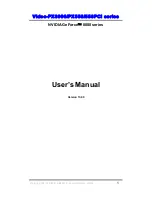
37
MII:
Media Independent Interface, the standard interface for Fast Ethernet—similar to the AUI interface for
traditional Ethernet.
Network Diameter:
Wire distance between two end stations in the same collision domain.
PCI:
Peripheral Component Interconnect - Local bus for PCs from Intel that provides a high-speed data path
between the CPU and up to 10 peripherals (video, disk, network, etc.). The PCI bus runs at 33MHz supports 32-
bit and 64-bit data paths, and bus mastering.
Static IP:
If your Service Provider has assigned a fixed IP address; enter the assigned IP address, subnet mask
and the gateway address provided by your service provider.
Subnet Mask:
A subnet mask, which may be a part of the TCP/IP information provided by your ISP, is a set of
four numbers configured like an IP address. It is used to create IP address numbers used only within a particular
network (as opposed to valid IP address numbers recognized by the Internet.
Switched Ports:
Ports that are on separate collision domains or LAN segments.
Transmission Control Protocol/Internet Protocol (TCP/IP):
Protocol suite that includes TCP as the primary
transport protocol, and IP as the network layer protocol.
TCP:
Transmission Control Protocol - TCP and UDP (User Datagram Protocol) are the two transport protocols
in TCP/IP. TCP ensures that a message is sent accurately and in its entirety. However, for real-time voice and
video, there is really no time or reason to correct errors and UDP is used instead.
UDP:
User Datagram Protocol - A protocol within the TCP/IP protocol suite that is used in place of TCP when
a reliable delivery is not required. For example, UDP is used for real-time audio and video traffic where lost
packets are simply ignored, because there is no time to retransmit. If UDP is used and a reliable delivery is
required, packet sequence checking and error notification must be written into the applications.


































